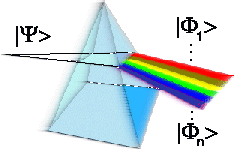Phys. Rev. A 60, R3381 (1999)
Ł. Dobrek, M. Gajda, M. Lewenstein, K. Sengstock, G. Birkl, and W. Ertmer
We demonstrate numerically the efficient generation of vortices in Bose-Einstein condensates (BECs) by using a “phase imprinting” method. The method consists of passing a far-off-resonant laser pulse through an absorption plate with an azimuthally dependent absorption coefficient, imaging the laser beam onto a BEC, and thus creating the corresponding nondissipative Stark-shift potential and condensate phase shift. In our calculations we take into account experimental imperfections. We also propose an interference method to detect vortices by coherently pushing part of the condensate using optically induced Bragg scattering.
Jul 7, 1999
Optical generation of vortices in trapped Bose-Einstein condensates
Phys. Rev. A 64, 043601 (2001)
Ł. Dobrek, M. Gajda, M. Lewenstein, K. Sengstock, G. Birkl, and W. Ertmer
We demonstrate numerically the efficient generation of vortices in Bose-Einstein condensates (BECs) by using a “phase imprinting” method. The method consists of passing a far-off-resonant laser pulse through an absorption plate with an azimuthally dependent absorption coefficient, imaging the laser beam onto a BEC, and thus creating the corresponding nondissipative Stark-shift potential and condensate phase shift. In our calculations we take into account experimental imperfections. We also propose an interference method to detect vortices by coherently pushing part of the condensate using optically induced Bragg scattering.
Ł. Dobrek, M. Gajda, M. Lewenstein, K. Sengstock, G. Birkl, and W. Ertmer
We demonstrate numerically the efficient generation of vortices in Bose-Einstein condensates (BECs) by using a “phase imprinting” method. The method consists of passing a far-off-resonant laser pulse through an absorption plate with an azimuthally dependent absorption coefficient, imaging the laser beam onto a BEC, and thus creating the corresponding nondissipative Stark-shift potential and condensate phase shift. In our calculations we take into account experimental imperfections. We also propose an interference method to detect vortices by coherently pushing part of the condensate using optically induced Bragg scattering.
Subscribe to:
Comments (Atom)
